Wheelchair accessible Washington DC: The Ultimate Guide
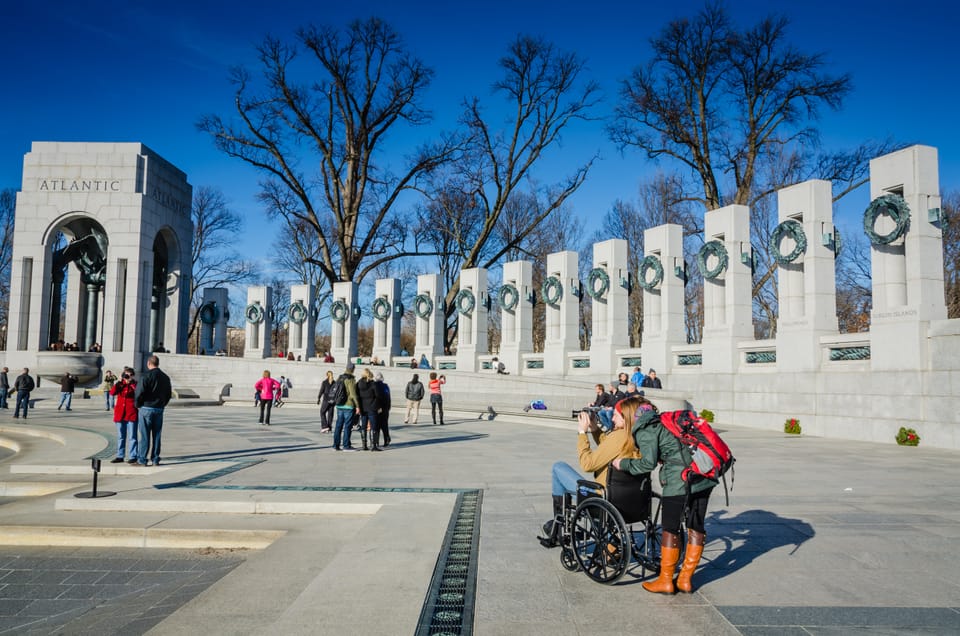
What's Ahead?
- About Accessible Washington DC and Why Travel There
- When Should You Travel There?
- Season Recommendations
- Where to Stay in DC
- Accessible Transportation in Washington DC
- Top 10 Things to do and Their Accessibility
- Accessible Restaurants Recommended by Our Community
- Accessible Washington DC Tips from Our Community
- Safety
- Get Accessibility Covered - Guaranteed
Despite having constant access to the internet, accessibility information is still relatively inaccessible. Yes, there is a lot of irony in that fact, but this is something that is changing, albeit slowly. And we're not just talking about transport, but also information on every aspect including attractions, hotels, and restaurants.
Not having access to such important information can impact a trip. Without the necessary facts, many travelers with reduced mobility are unable to get the travel experience they deserve. But we're changing this. At Wheel the World, we provide accessibility information across all areas when it comes to travel. For anyone visiting Washington DC, take a look at this accessible travel guide for your ultimate guide to this city.
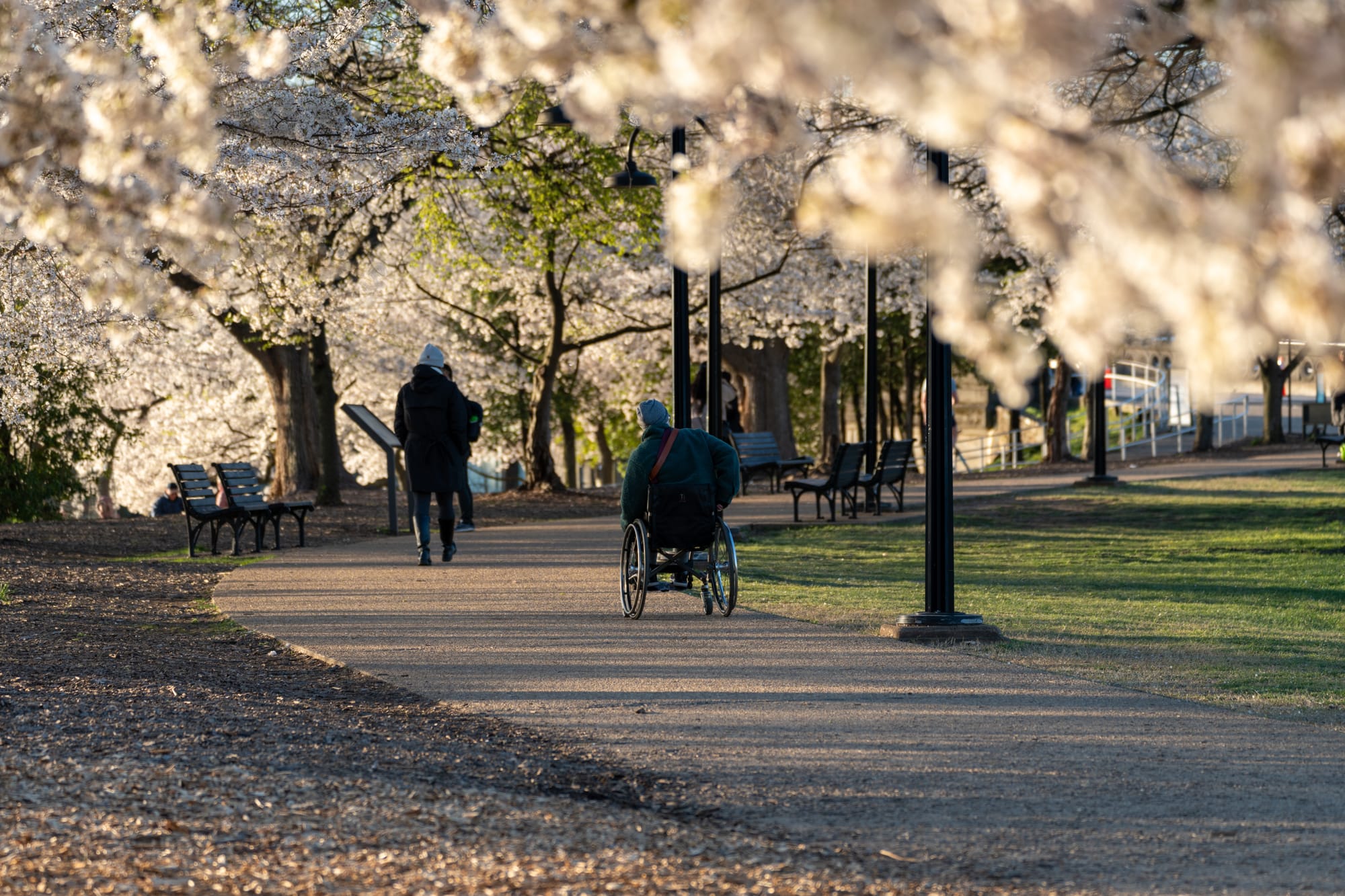
About Accessible Washington DC and Why Travel There
One of the world's most wheelchair-accessible cities, Washington DC really makes it easy for you to get around. The city has taken many steps to ensure you won't miss out on any of the important sites even if you're navigating alone. However, while there are improvements, the natural terrain of Washington DC is not always wheelchair-friendly. For instance, some parts of the city do have steeper or hillier terrain, which can be hard to wheel or walk up without aid.
Luckily, most of the tourist attractions are located in the central district. This area, where you can find the main monuments, museums, and the National Mall, are mostly flat making navigation easy. If you do come across hillier areas, then the city bus is a great choice. With many bus routes being completely accessible, this is a strong option if you need help getting around, but more on that later.
In terms of the actual sidewalks, most of these are well-maintained offering an even, smooth surface for you to get about on. However, while most are very useable (complete with curb cuts at every intersection), not all sidewalks are completely smooth. Washington DC is prone to some harsh winters and this does cause cracks or rises in the paving which can make it uneven in places.
Now that we've covered the facts about its accessibility, why should you travel to Washington DC? Well, there are some of the most iconic landmarks in the country here including the Lincoln Memorial, Washington Monument, and, of course, the White House. Additionally, there are some world-renowned museums including the Smithsonian, giving you a cultural and historical experience. In terms of politics, as the capital of the US, Washington DC is a great place to take tours and discover the inner workings of the government. It's even possible to watch congressional sessions. Finally, Washington DC has a great culinary scene, as well as being a stunning looking city when the cherry blossoms are in full bloom during Spring.
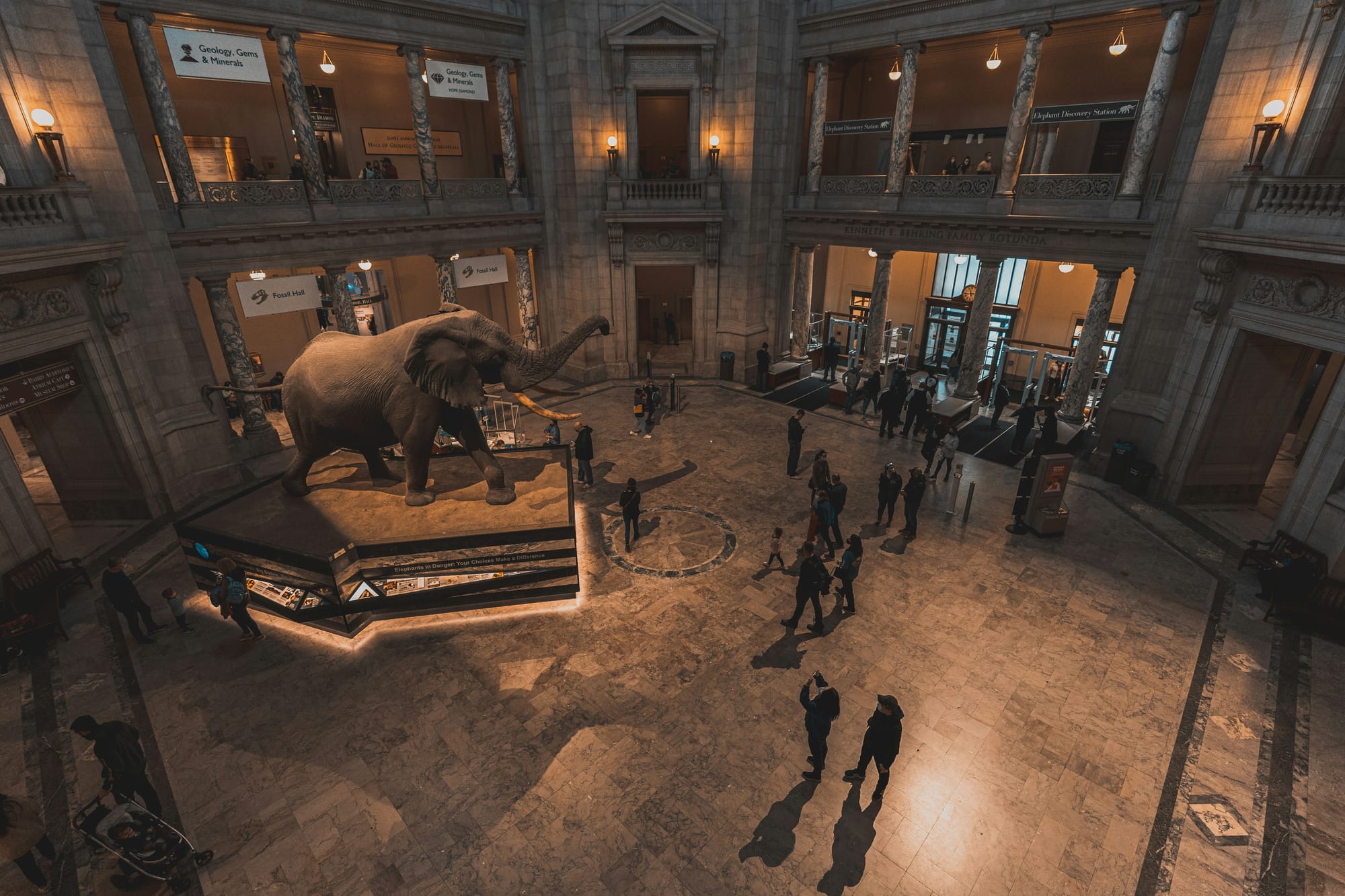
When Should You Travel There?
Washington DC offers something for everyone, no matter the time of year. That being said, some times of the year are better than others, especially if you have a particular preference regarding the weather. With that in mind, here are the four seasons and what they have to offer, giving you a better idea of when to plan your trip.
Fall
Fall is a great time to travel to Washington DC, with temperatures ranging between 50-68 degrees Fahrenheit, which makes it a very pleasant time to explore the city. Especially if you're going under your own steam. There's not much rain during this season either. Instead, you're treated to crisp mornings and clear days making it perfect weather for outdoor exploring and views of the fall foliage.
Spring
Early spring can actually be quite chilly in Washington DC with temperatures falling to as low as 37 degrees F at the beginning of March. However, later on, it warms up with an average of 60-75°F. There can be rain and storms too, but the biggest thing to be aware of here is that the temperatures can fluctuate quite dramatically from day to day, so pack accordingly.
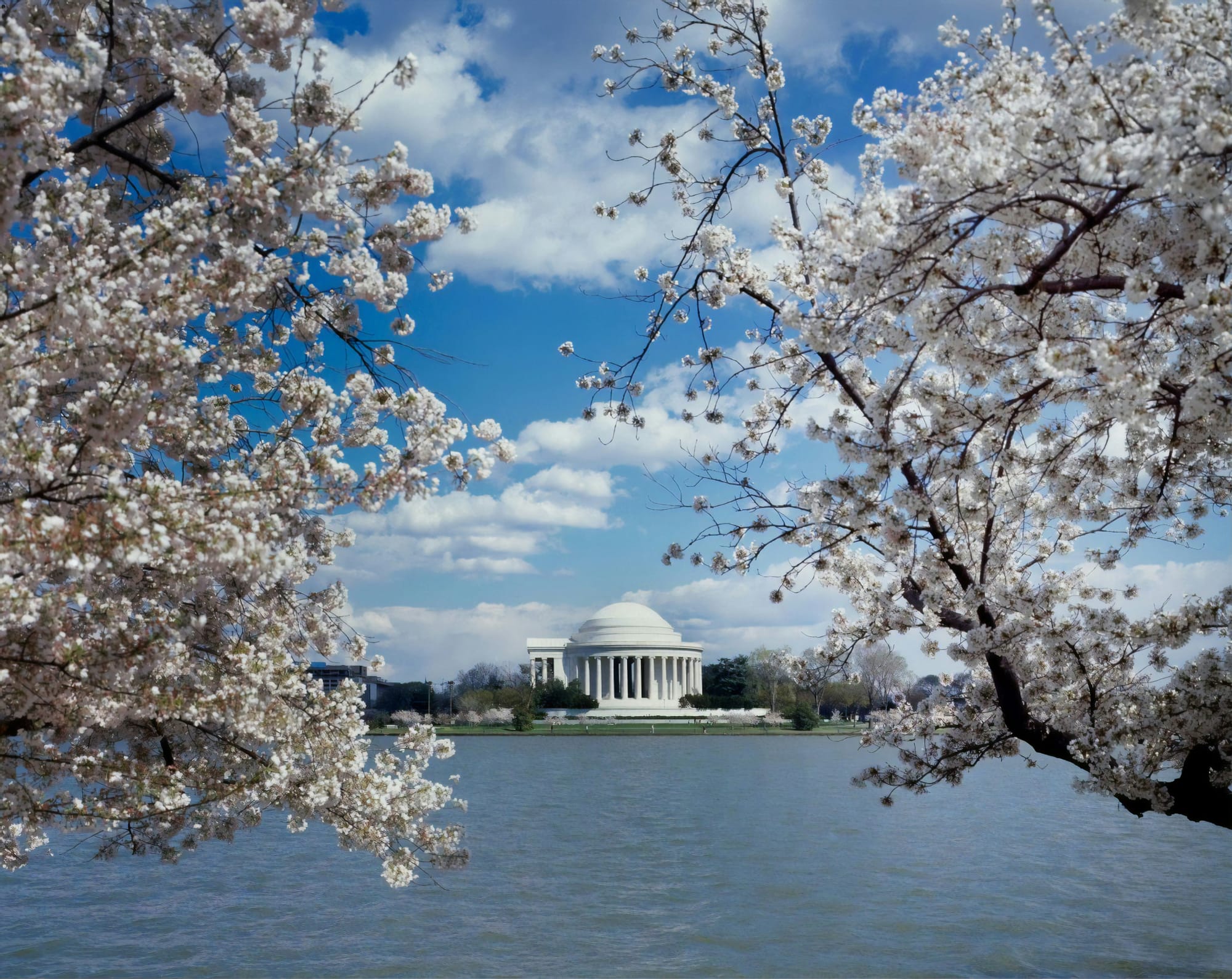
Summer
With temperatures reaching highs of 86 to 95 degrees Fahrenheit, summers in Washington DC are hot. Heatwaves can hit too, pushing the mercury even higher. Humidity is another important factor, making it feel hotter than it is, which makes hydration a priority and potentially requires planning more indoor activities than outdoor ones.
Winter
The colder months are still pretty mild when compared to other northern states. Temperatures tend to sit around 30-45°F, though there can be colder days and even some snow. It varies from year to year, so checking for imminent snow is essential. At least, if it does snow, the city is good at clearing it away for accessibility purposes.
Season Recommendations
Still stuck? Well, here are some tips from us to you regarding the different interests you might have and when is better to visit the city to indulge in them.
- March to May is the best time to visit if you want to see the stunning cherry blossoms in full bloom. The weather is also milder, and if you come in March, you will miss many of the tourists who tend to flock in later in the year. However, March is one of the rainiest months, but it does come with the caveat that you can grab cheap hotel deals.
- June to August is best for those who prefer warm weather. It's also a great time if you want to spend your trip outdoors. Many of the big festivals and events are held during these months including Jazz in the Park, Pride, and the folk festival. However, it's also when most people visit making this time very crowded and a lot more expensive.
- September to November is one of the quietest times of the year as kids are just back to school. September, in particular, will see you avoiding the crowds, while also getting some of the best weather of the year. And, you can enjoy some of the best deals while exploring both inside and outside. In fact, with museums and monuments empty, and the fall foliage in full swing, you get the best of it all.
- December to February is a good time if you don't mind the cold and want to avoid crowds. You can spend your days wandering the museums, buildings, and monuments without having to fight your way past thousands of people. Surprisingly, Christmastime is relatively quiet. You can avoid the usual school groups, and check out the decorations and festive fun including parades, pop-up bars, light displays, and tree lighting.
Where to stay in DC
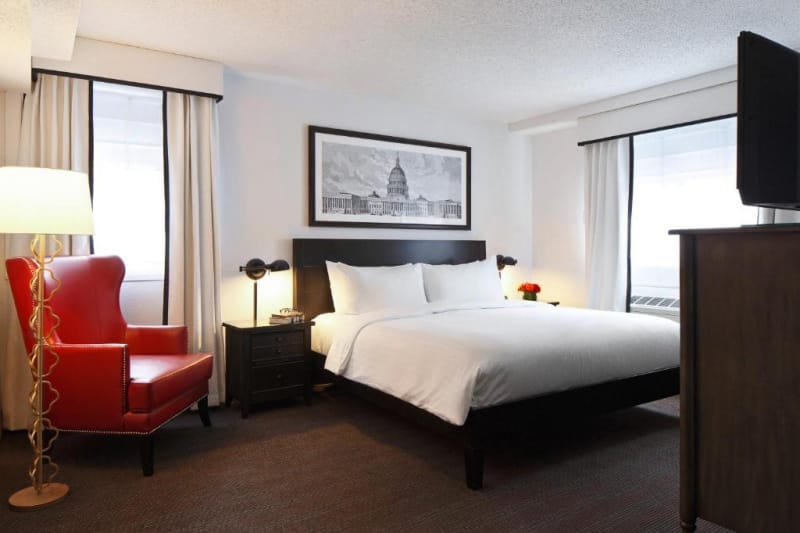
Washington DC has an impressive number of accommodation options for whenever you decide to stay here. Thanks to the extensive public transport network, you'll be able to stay in many different neighborhoods. You can choose where you want to stay based on the vibe and its proximity to areas of interest to you.
Choosing to stay in somewhere like the Mandarin Oriental close to the National Mall area means you're super close to the main monuments and memorials. You won't have to go far to see the main sites, which makes it a great spot if this is your first time visiting, or you just want to spend time at the museums. It's a crowded area though, so bear that in mind.
East of the National Mall is Capitol Hill, which also gives you access to the main sites with minimal wheel time. It's a more elegant neighborhood with stunning architecture. But because of this, hotels like Capitol Hill Hotel can be a bit pricier than other DC neighborhoods.
Foggy Bottom and Georgetown are slightly further from the main hustle and bustle of the city. Georgetown is a more historic quarter filled with colonial mansions and antique stores. Both areas have quaint independent cafés and some stunning dining options. There is also more green space here, which is great if you want to wheel around. However, they are further out, so if you want access to the main sites and hotels it can be expensive. Some good options here include The Watergate Hotel Georgetown and the Rosewood Washington – both of which offer wheelchair accessible features such as grab bars for both the toilet and shower, step-free entrances, and roll-in showers (to name a few).
Accessible Transportation in Washington DC
Navigating the city you're visiting is an important part of any trip. Happily, Washington DC has numerous excellent transportation options available. That being said, familiarizing yourself with these before you go is a big help.
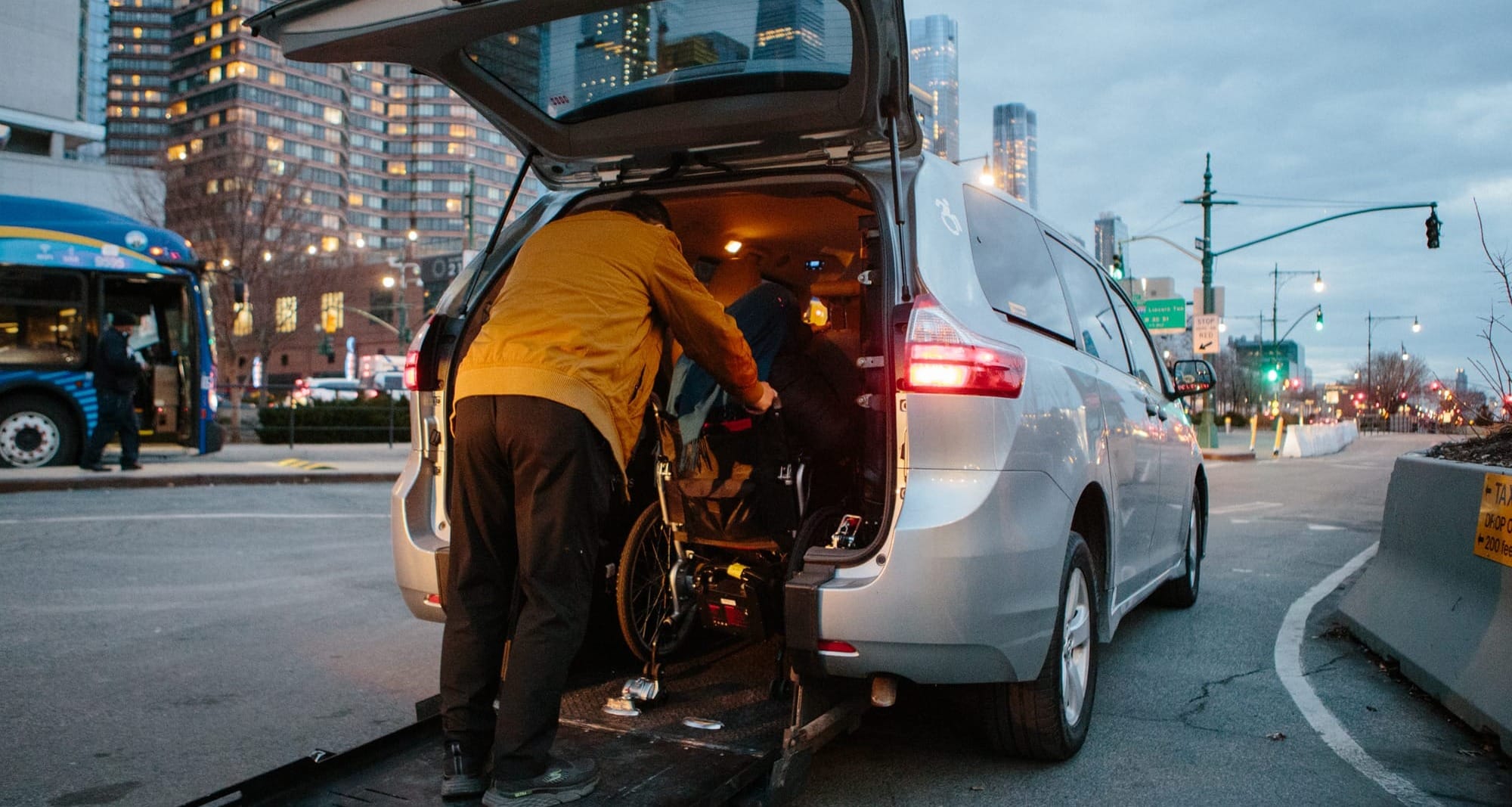
Moving to/from the airport
If you're arriving at one of the two main airports, then both are fully accessible for anyone with reduced mobility. Assistance can be provided at all times, and various metro and bus lines link the airports to the main city.
If you're coming from Ronald Reagan Washington National Airport (DCA), the Blue and Yellow Metro lines take you downtown. The metro is fully accessible.
Washington Dulles International Airport (IAD) also has Metro and bus lines. You can take the Silver Line Express bus to the Wiehle-Reston East Metro station, changing there onto the Silver Metro line to head downtown. While you will have the hassle of a transfer, both lines have ramps, and reserved disability spaces.
Baltimore Washington International Thurgood Marshall Airport (BWI) is a third airport providing access to Washington DC. It's further away, so you'll have to use the MARC or Amtrak intercity train services. Both can be taken to Union Station in Downtown Washington DC. The station and both train lines have wheelchair areas, special seating, and ramps.
Taxi or ride-sharing services are available at all three airports. These are convenient if you have to get somewhere very specific. However, it is advisable that you book in advance to secure a vehicle that can accommodate your mobility needs.
We can also help you book an accessible rental van.
Getting around Washington DC
Once you're in Washington DC, you'll be happy to know that there are plenty of ways to get around, with some areas being fully accessible by wheelchair. However, if you need to travel to different neighborhoods, accessing public transport will be necessary.
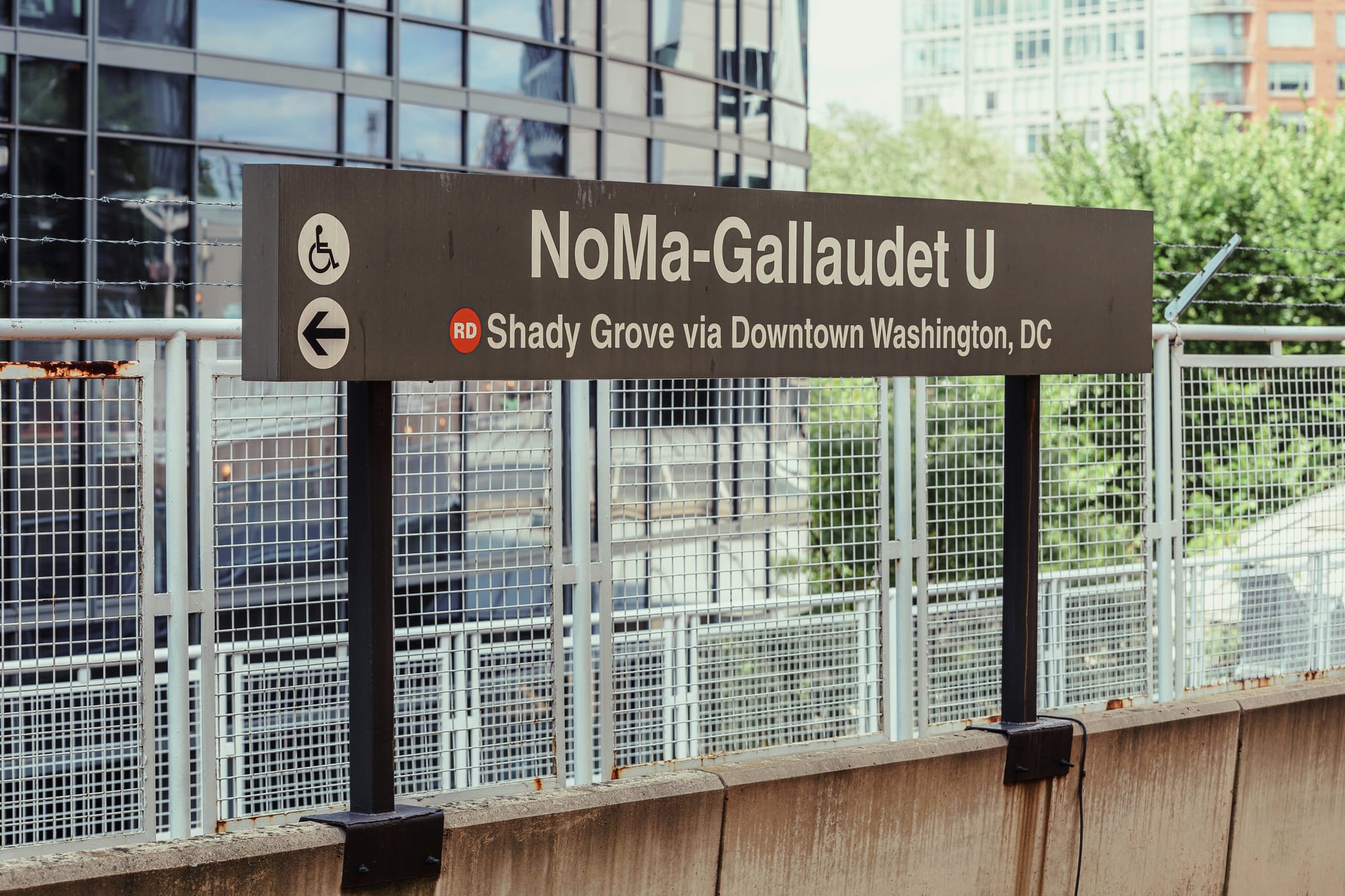
Metro
This underground train system connects the city and the suburbs. It's got extensive coverage with multiple stations giving you access to the monuments, museums, and historical sites. Almost all metro stations have elevators giving you easy access to the platform. There are also wheelchair ramps, and, on each train, you'll find larger spaces designated for passengers with disabilities or specific special seating.
Buses
Operated by the Washington Metropolitan Area Transit Authority, the buses also cover a lot of routes throughout the city. All buses come with ramps and reserved spaces for those with reduced mobility. Audible announcements and larger visual signage are provided for indicating stops, and drivers will provide aid to those with hearing or visual impairments — just ask.
Taxis
There are two taxi services in Washington DC offering accessible vehicles — Yellow Paratransit and Royal Taxi. Both need to be booked. Flagging down a taxi in the city is likely to result in getting one that can't accommodate accessibility needs.
Trains
MARC and Amtrak are the commuter trains in the area, connecting Washington DC to the nearby cities and states. Both companies offer accessibility on both trains and platforms. However, for both lines, not all stations have elevators or ramps though the major ones do. On the trains themselves, both MARC and Amtrak have reserved spaces for passengers with disabilities and special seating.
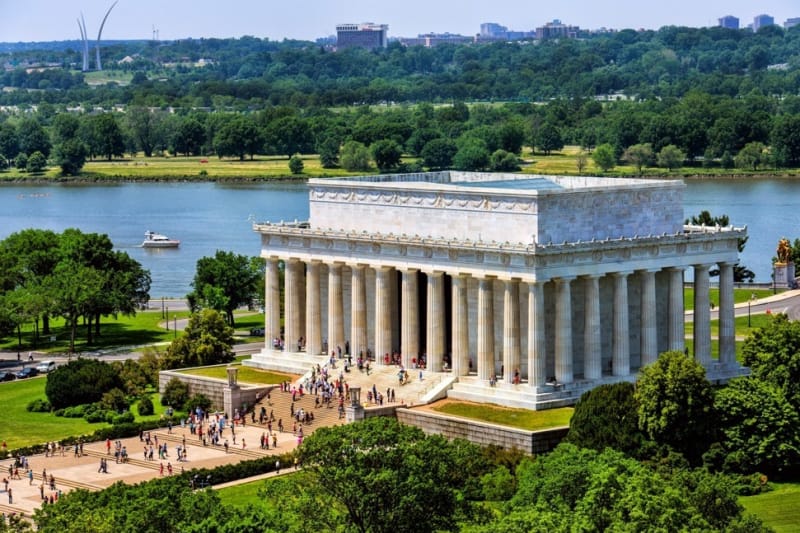
Top 10 Things to do and their Accessibility
Washington DC has an enormous selection of things to do and see, especially when it comes to the historical and political side of things. There are various wheelchair-friendly tours available including those offering trips around the museums and monuments. You can do these alone as well, so have a look below at just a few of the attractions you can visit in this city.
1. Smithsonian Museums
There are many different Smithsonian museums around the National Mall. These include the National Gallery of Art, the National Air and Space Museum, and the National Museum of American History. Each museum is fully able to support those with accessibility needs ensuring all exhibits can be accessed and understood.
2. The National Mall & Memorial Parks
A massive green area, the National Mall is home to many of the iconic monuments and museums you've come to see including the Washington Monument and Lincoln Memorial. Bordered by the White House and the United States Capitol, you can simply sit and marvel, or wander about to see these iconic monuments thanks to the flat, smooth walkways throughout the area. With paved paths that cross the grass gardens, you will be able to explore two incredible museums: Holocaust Museum and the African American Museum, both wheelchair accessible.
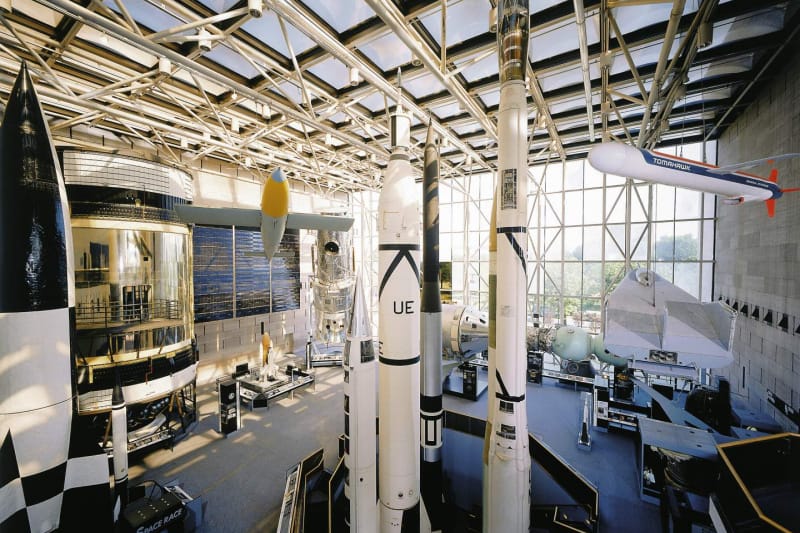
3. United States Capitol
Finished in 1800, the Capitol Building sits at the east end of the National Mall. It's the seat of the legislative branch of the US government. You can go inside and take a Capitol tour where you will be shown the Senate and House of Representatives chambers. The building is easy to access with ramps and elevators throughout.
4. Lincoln Memorial
Honoring the 16th US president, the Lincoln Memorial sits at the west end of the National Mall, and offers you great views of the National Mall and the Reflecting Pool. It's easy to access via Metro from Foggy Bottom station. Once there, it has ramps and elevators to make access simple.
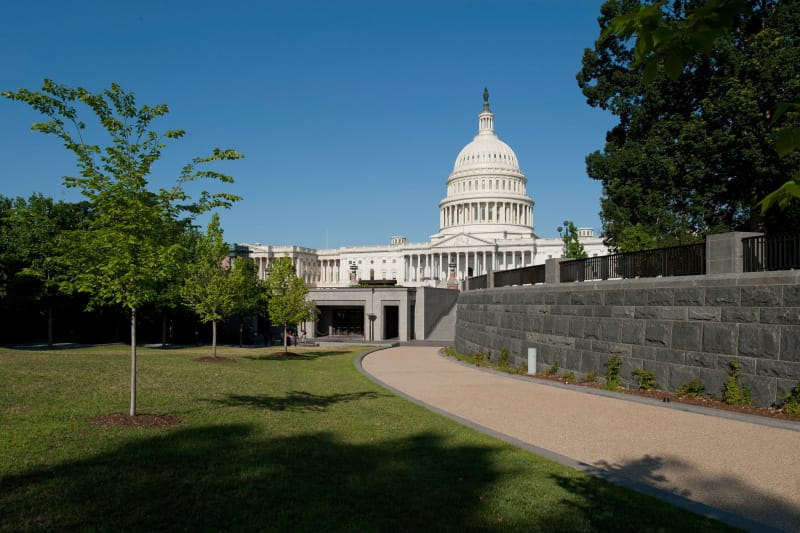
5. The White House
This is the official home of the President of the USA. It's a stunning design with plenty of opportunities to take photos, as well as discovering more about the government. It is possible to join a tour of the White House, though these are limited. Viewing it from outside is still stunning, and you can visit Lafayette Square nearby, which also has accessible entrances.
6. National Gallery of Art
This museum houses an impressive selection of art. Many of these works hail from influential artists from around the world. These include the likes of Da Vinci, Van Gogh, and Monet. The National Gallery is actually two buildings connected by a wide underground passage. Access throughout the exhibits is easy for anyone in a wheelchair and there are special adapted tours and materials in accessible formats in all exhibits.

7. National Zoo
The Smithsonian Zoo is a great place to see an array of wildlife. This includes some of the more iconic species including elephants, lions, and giant pandas. Access throughout the zoo is very easy thanks to paved paths and adapted designs enabling everyone to get a good look at the animals. If you've got reduced mobility, you can also rent a wheelchair for the day.
8. Kennedy Center for Performing Arts
This famous venue is great for a tour or to actually watch a performance. There is reserved seating in the halls and theaters, so if you do book a ticket, you'll get a good view. For the tours, there are elevators and ramps to aid you in getting around. Additionally, accessible transport services are provided for anyone who needs assistance reaching the Center.
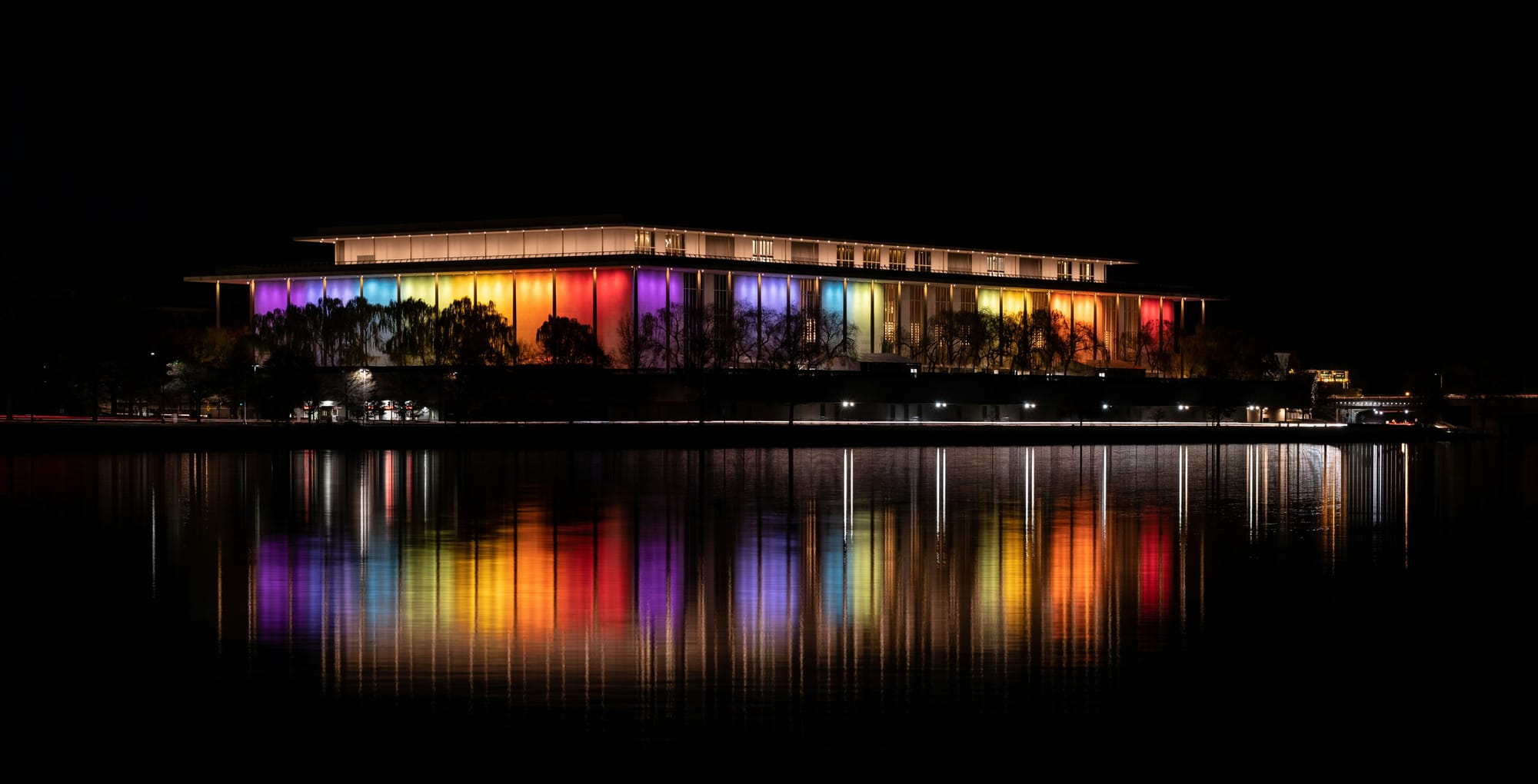
9. Georgetown
This historic neighborhood is packed with quaint streets, each one full of restaurants and shops. There is also the incredibly pretty Georgetown Waterfront Park, which you can get around easily thanks to flat, paved sidewalks. Some of the smaller streets within the neighborhood can be slightly trickier to navigate though.
10. Library of Congress
It's the biggest library in the world and home to millions of books, maps, historical documents, and manuscripts. Additionally, it's simply a stunning place to visit and marvel at. You can get around it easily thanks to the elevators on different levels, wide doors, and ADA-compliant restrooms.
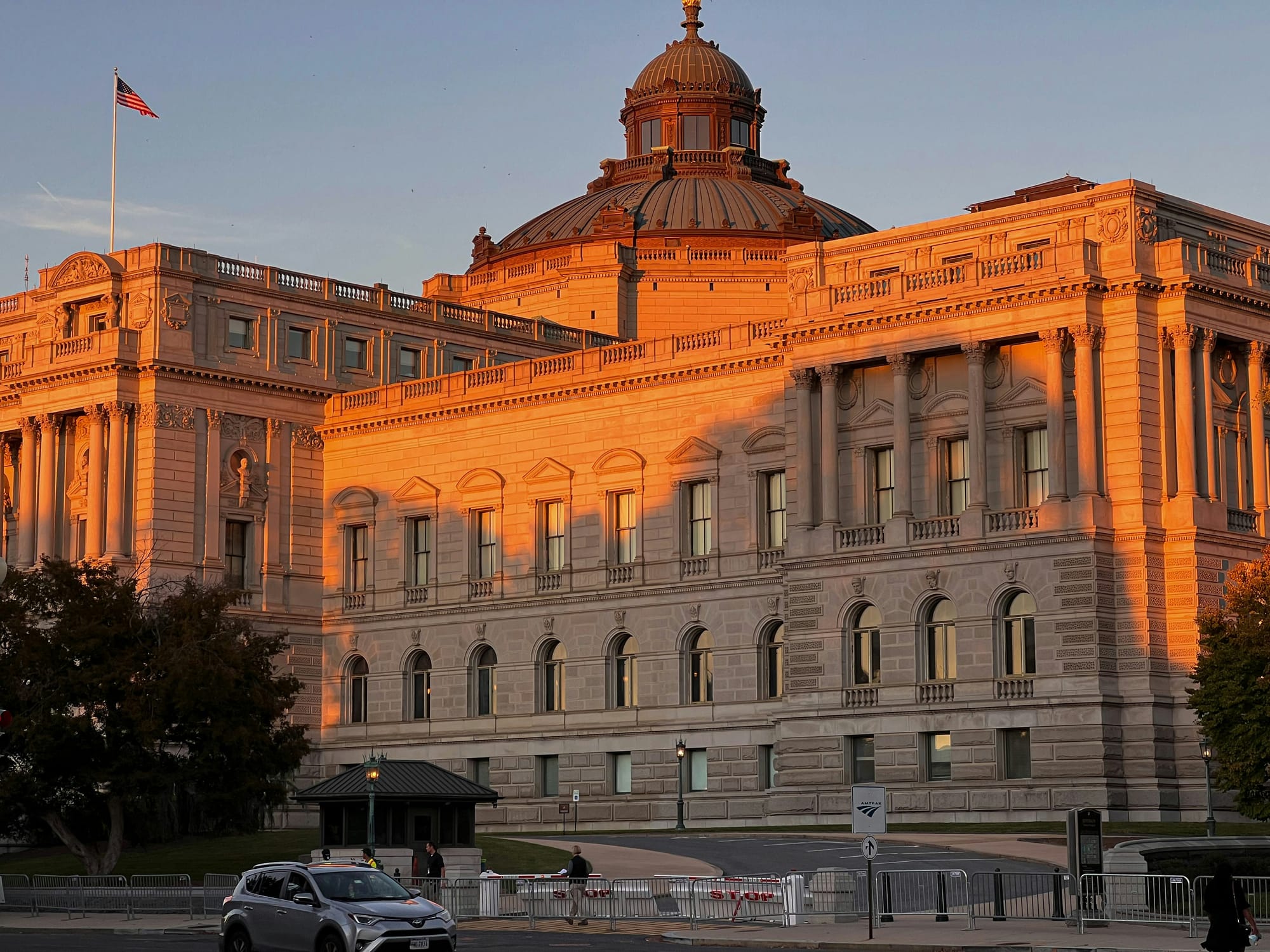
Accessible Restaurants Recommended by Our Community
Wheelchair-accessible restaurants are becoming more mainstream, especially in cities like Washington DC. Thanks to our community of WtW travelers, we're able to select some of the best places that highlight the culinary delights of this city. Not only that, but these restaurants offer accessible restrooms, wide entrances, spacious interiors, and, of course, delicious food. Have a look below.
- Cava: Fast-casual Mediterranean restaurant with customizable plates on Connecticut Avenue.
- Busboys and Poets: Several branches offering a diverse menu with cultural events, and lively, inclusive atmospheres.
- Clyde's of Gallery Place: American-style menu with discounted parking at Gallery Place Parking Garage.
- Ben's Chili Bowl: Historic diner well-known for half-smokers and chili dogs.
- Founding Farmers: Farm-to-table offering American comfort food for all dietary needs at three DC locations.
- Open City: Diner-style eatery offering breakfast, all-day brunch, and dinner with a relaxed vibe.
- The Hamilton: Range of dishes covering everything from sushi to steak accompanied by live music just minutes from the White House on 14th Street N.W.
- Chinatown Express: Affordable and authentic Chinese cuisine in the heart of Chinatown.
- Shake Shack: Fast-food chain with delicious burgers, shakes, and fries. Check out the F Street branch.

Accessible Washington DC Tips from Our Community
Finding Bathrooms
When you need to go, it can be quite an urgent business. Luckily, as Washington DC is so well-geared towards those with reduced mobility, there are plenty of places to find a restroom when you need one.
Most public places like restaurants, government buildings, attractions, and cafés have accessible bathrooms. Better still, the city specifically advertises accessibility. Consequently, when you roam around you will see specific signage for accessible toilets. And, there are several downloadable mobile apps available that can help you find a restroom. Look for AccessNow, WheelMate, and Flush Toilet Finder. Or, you can simply ask at your hotel reception or in tourist centers — staff are usually happy to help.
Packing List
Being prepared is key on any trip, so make sure you take all the essentials to keep you comfortable. We recommend the following:
- Medications
- Disability documents and ID
- Wheelchair battery charger (if you need it)
- Converter if you're not from the US*
- Service dog essentials
- Rain gear if you're coming in March
- Sunscreen and a hat if you're coming in the summer
- Warm clothing and jackets for the winter
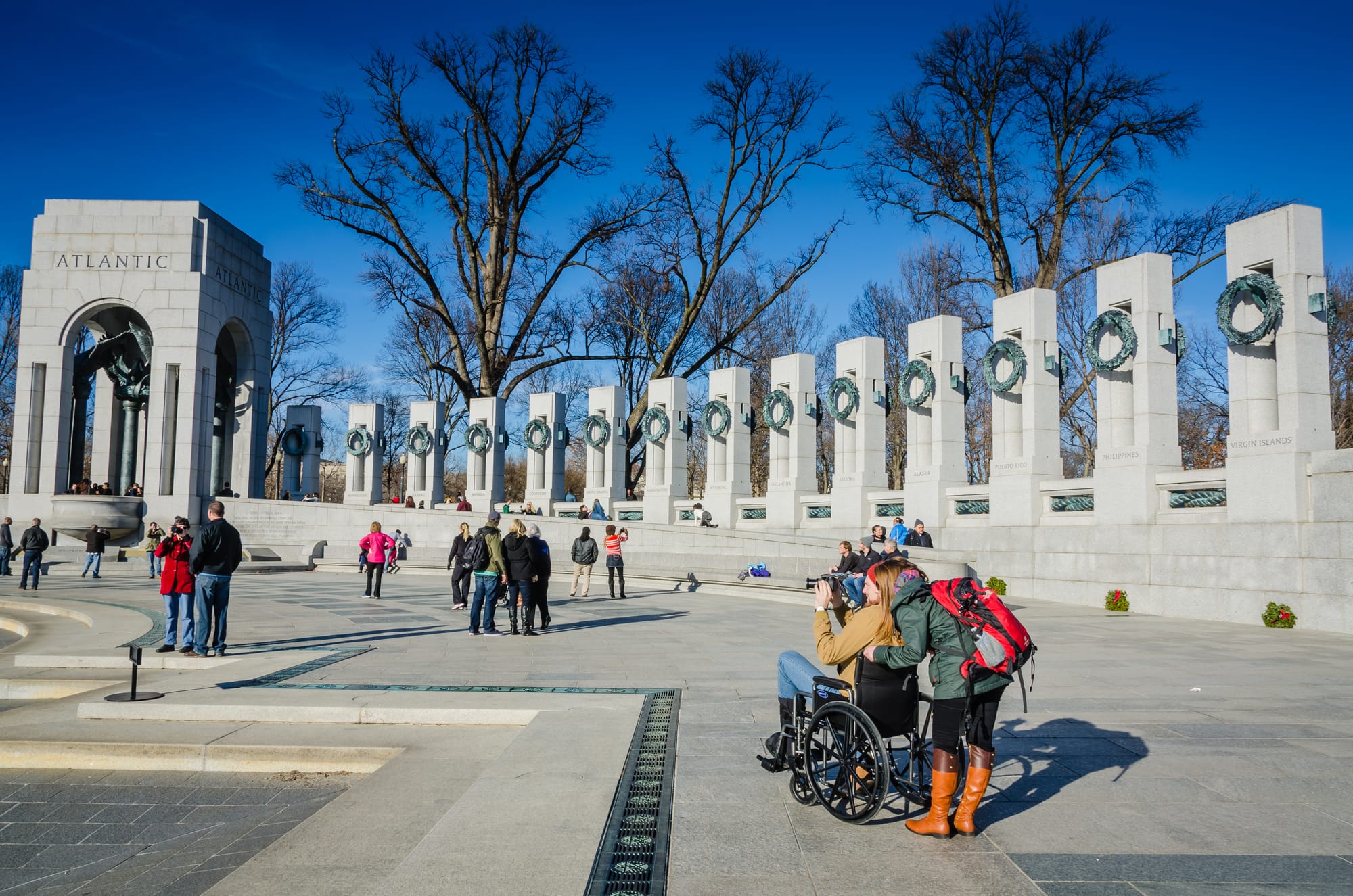
Safety
Traveling around Washington DC is generally very safe for tourists. However, as with any city in the world, you should always take steps to ensure you're being safe. For instance, some areas of Washington DC have higher crime levels. As such, avoid going into these areas, especially at night. Make sure you familiarize yourself with the areas and routes you intend to take when traversing the city. Also, avoid areas that don't appear as crowded, make sure you don't leave valuables in plain sight, and simply pay attention to your surroundings at all times.
Get Guaranteed Accessibility
For any help, don't hesitate to get in touch with us here at Wheel the World. Our team of experts is on hand to ensure you have a fun time when you visit Washington DC. With this in mind, we can also help you plan your trip from start to finish to make sure you've covered everything.
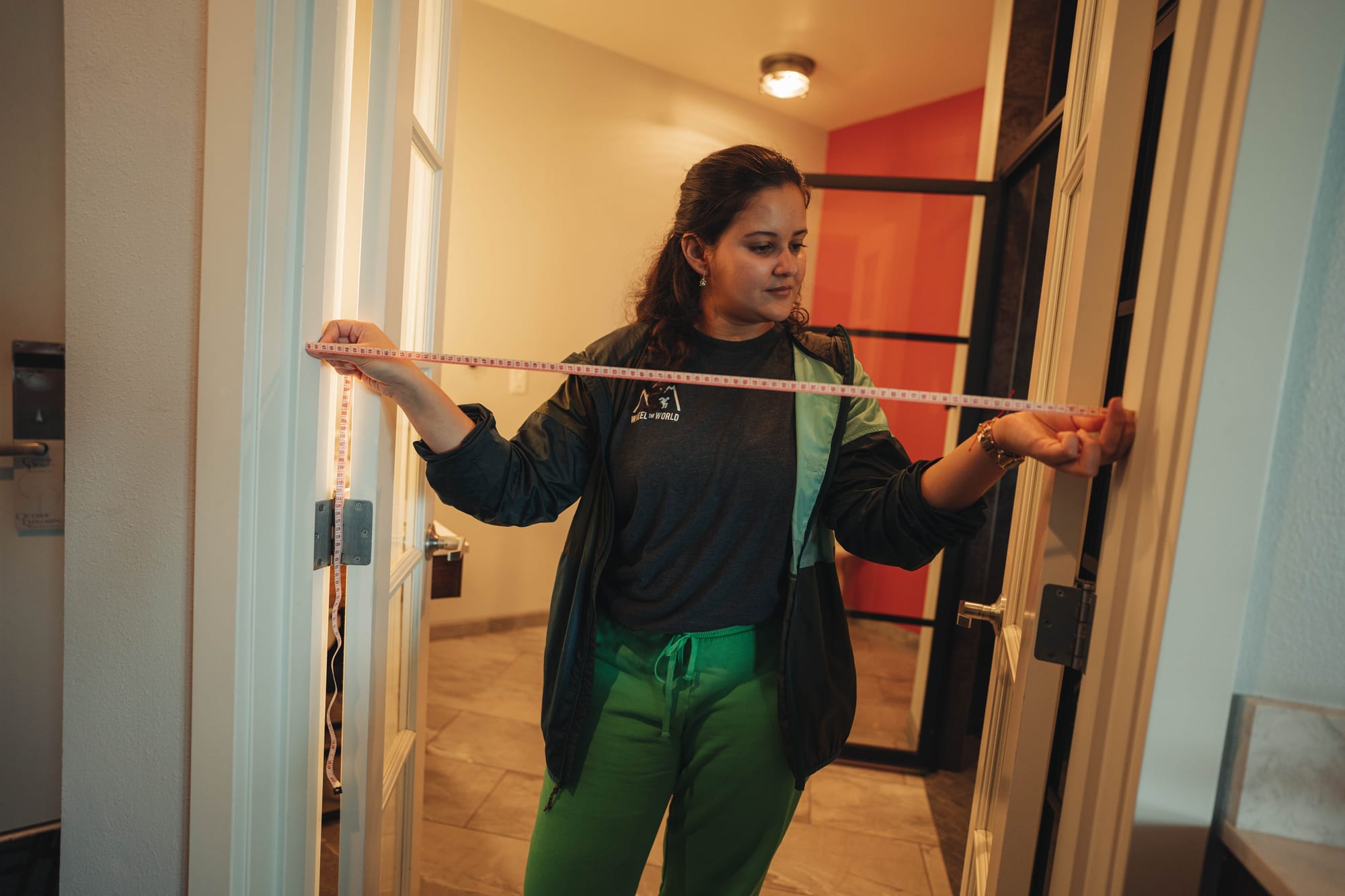
Plan a Visit That Suits Your Accessibility Needs
Find hotels, things to do, and transportation with detailed information on accessibility.
Start Here


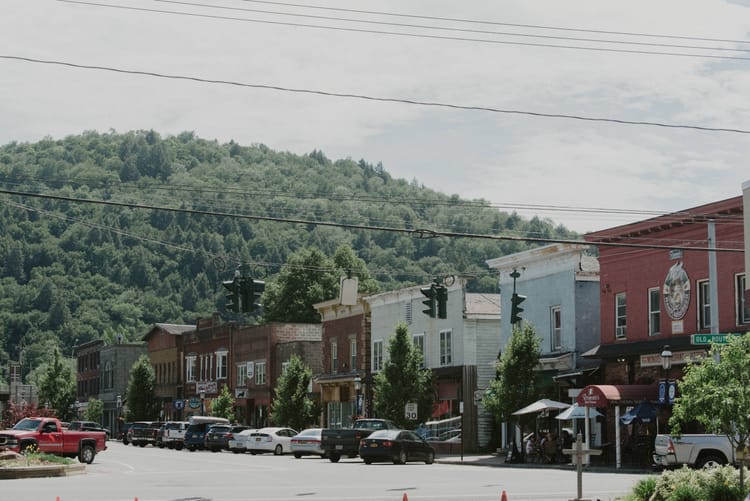

Comments ()